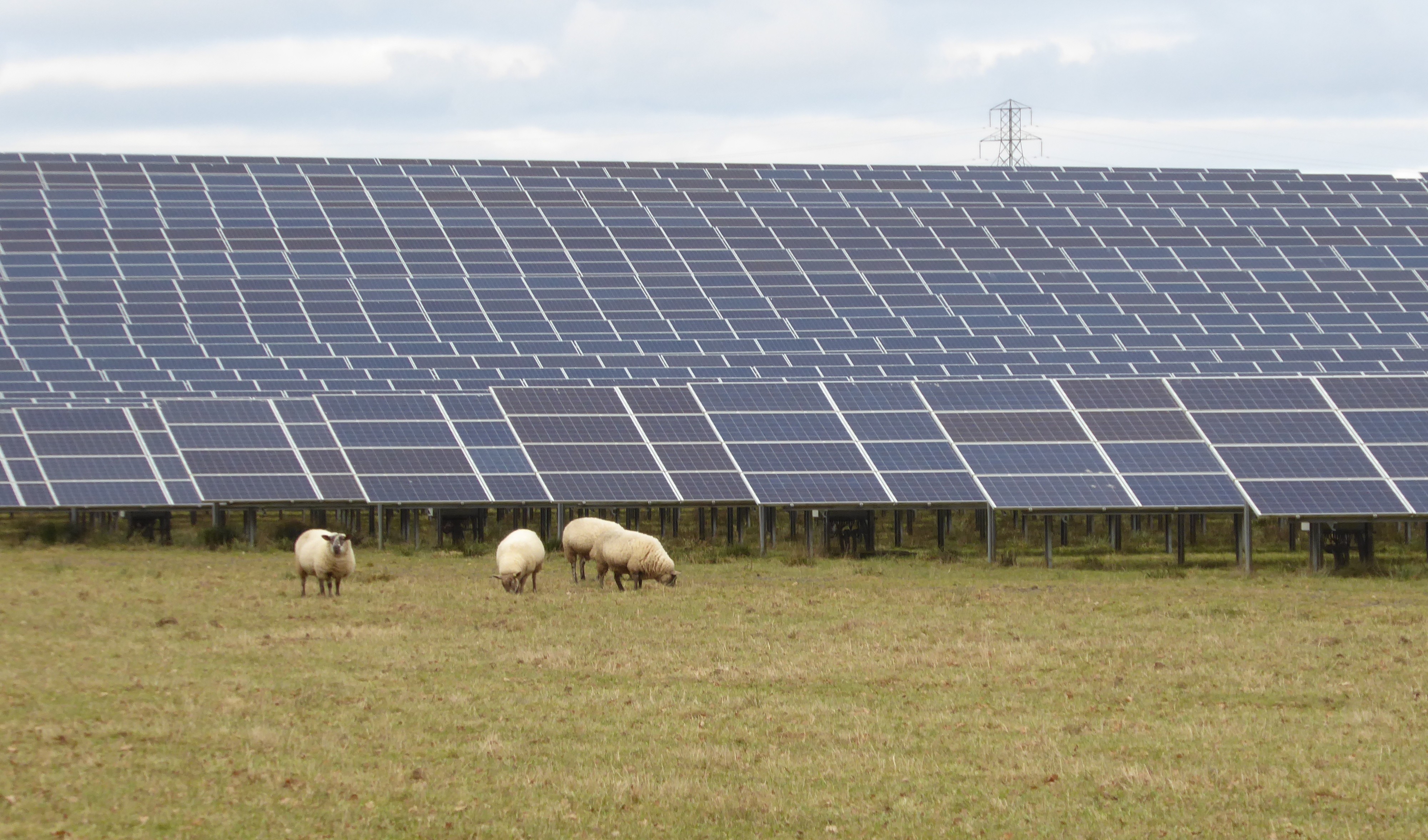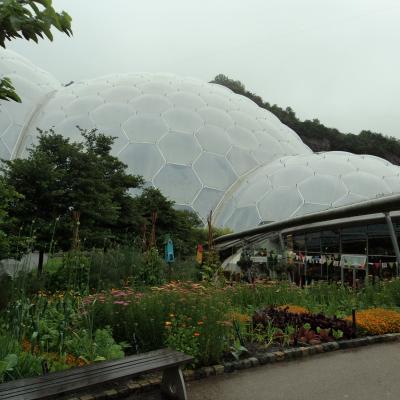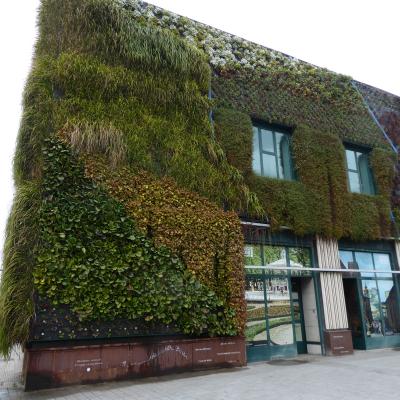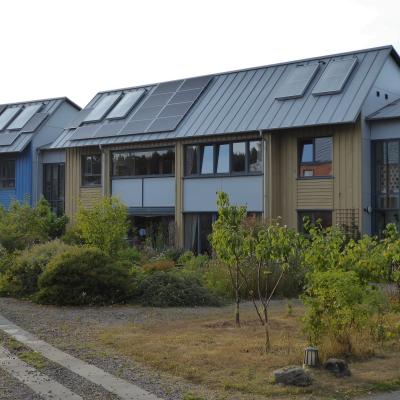Solar power is cheap and clean. Solar pv is the fastest growing energy source on the Planet and will soon become ubiquitous. In this blog I explain why.
Falling Costs
The cost of electricity produced by solar power has been falling for the last two decades. This trend is likely to continue due to the increased efficiency of panels, lower cost of silicon, improved manufacturing techniques, and economies of scale – the higher the demand and deployment, the lower the cost. Costs have fallen by 80% in the last 10 years.
In the UK, electricity from solar farms can be sold for as little as 5p per kWh. In sunnier countries it can be produced at even lower prices – cheaper than any other renewable or fossil fuel competitor.
Solar Panel Efficiency
In the early days, standard silicon panels could convert around 6% of sunlight into useful electricity. By the early 1990’s this had increased to 15%, which along with falling costs made them commercially competitive for the first time. Solar panels are now around 22% efficient. These improvements have been achieved through research and innovation into new materials, and cells that capture a wider range of the light spectrum. Innovation continues, for example, perovskite cells may capture even more than the current silicon-based panels.
Where can Solar be Deployed?
To maximise solar radiation at mid-latitudes, solar panels are best deployed at an angle, either placed on the ground or, in the northern hemisphere, on a south-facing sloping roof. Nearer the equator they can be deployed horizontally on roofs or laid flat on the ground. I have also seen solar panel arrays in Spain that track the sun during the day, increasing their output by 30%. Although not as efficient, they can be deployed vertically, for example on walls.
Solar is very compatible with offices, schools and other public buildings which are mostly occupied during the day. It is also compatible with the global increased demand for air conditioning which often coincides with hot and sunny weather.
Traditionally there were two main categories: solar farms and rooftop solar - sub-divided by commercial and domestic roofs. Now there are far more options:
- Floating solar panels on reservoirs can supplement hydro-electric power
- Solar panels above irrigation channels help to reduce evaporation
- In arid regions, solar panels power irrigation water pumps to replace diesel generators
- Railway companies are deploying solar panels alongside their tracks, and they can be deployed along road verges to double up as sound barriers
- Solar panels on the bonnet and roof of an electric vehicle can increase its range
- France requires the owners of car parks to deploy solar panels above car park spaces, to feed into electric vehicle charging points or to the grid
- Solar panels can be installed on multi-ownership apartment blocks with the electricity supplied to each apartment
- Germany allows residents to deploy vertical plug-in solar panels on apartment balconies without any complicated electrical connection
Innovation
Solar panels lose efficiency when they overheat under a hot sun. At the BE-ST innovation centre in Hamilton, water is circulated under the solar panels to reduce this overheating and increase the panels’ efficiency. Then this warmer water is used to pre-heat a heat pump which also increases its efficiency for space heating.
Bifacial solar panels on solar farms capture sunlight on the front and rear surface, taking advantage of reflected sunlight.
Roof tiles can function as solar panels which enable all the roof area to generate electricity, also avoiding the extra weight of panels on a roof. Solar windows can generate electricity whilst allowing light to pass through. Imagine this deployed in every skyscraper.
An important new development is solar cells made from perovskite. This enables thinner and lighter panels and can use a wider range of the sun’s rays. These ultra-thin and flexible panels can be integrated into clothing and fabrics for a wide range of new uses.
Manufacturing
Solar panels are primarily made of silicon, which is a semiconductor material that converts sunlight into electricity. Other key components include glass, which protects the cells, and aluminium, copper, and silver, used for the frame, wiring, and electrical contacts. Silicon is an abundant element that comes from sand and quartz of which there is no global shortage.
Global Growth
Electricity supplied by solar is growing exponentially. Rising from less than 1% in 2010, to 3% in 2020 to 7% in 2024. In 2024 solar generated 8% of electricity in China, 7% in the USA, and even 5% in the cloudy UK. The highest penetration of solar in the world is currently Namibia (38%), followed by Lebanon (31%) and Hungary (24%). Sunny Saudi Arabia has a paltry 2%, with Algeria by the Sahara desert only 1%. There is clearly scope for much more growth. [Source: Our World in Data].
China has been adding solar capacity at an impressive rate. In 2024 it installed more new solar capacity than the rest of the world combined. There is a ‘glut’ of solar panels manufactured which they are now selling cheaply to countries like Pakistan. Pakistan is one of the fastest growing solar countries in the world. Solar generation increased from 4% to over 10% in the 3 years to 2024. In 2024 alone, new solar added an additional one-third to its entire generating capacity.
In the UK 1.5 million homes have solar panels, around 5% of all houses. Solar farms take up around 0.1% of UK land which may increase to 0.4% in the coming decade to help meet the UK’s net zero electricity target.
Limitations
All solar farms have an impact on land-use and habitat, and I do sympathise with not blanketing the countryside around villages. Solar farms have, quite correctly, been criticised for spoiling the countryside and taking away prime agricultural land, or for destroying rare desert habitat. However, if wildflowers grow beneath the panels, then they can increase pollinators like bees and moths. They can also be integrated with agriculture – agrivoltaics - providing a diversified income for farmers. Sheep can graze beneath solar arrays. In hot countries some crops grow better under solar arrays as the shade reduces harsh day time temperatures and reduces evaporation.
Of course, solar panels only operate during daylight hours and generate far less electricity when it is cloudy. For this reason, they work best in tandem with battery storage. The cost of batteries continues to fall, but that is for another blog.
At high latitudes there are extremes of daylight and hours of darkness which undermine the ability to rely on solar panels. Snow can also prevent solar panels from operating. Areas exposed to violent hailstorms are also at risk as hail can damage panels.
My Home Experience
In 2010 I bought twelve 175w solar panels generating a maximum of 2.1kW for £10,000, subsidised by a generous feed-in-tariff. In 2022, I bought a further ten 250w panels, generating a maximum of 2.4kW for £4,150.
- Allowing for inflation, this is a 74% reduction in cost per unit of electricity generated,
- The more recent panels, at 22% efficiency, generate more electricity from a smaller roof-space than my original 15% efficient panels.
I generate around 3,200kWh per year, more than the 2,900kWh an average household uses in the UK. Of course, I use more than this as our household is highly electrified with a heat pump and an electric vehicle.
The exciting development is that the second set of solar panels didn’t require a subsidy to encourage me to buy them. If you have a south-facing roof they are now a worthwhile investment.
Solar Equity
Solar panels use energy directly from the sun. They are more efficient and clean than other forms of energy. Fossil fuels are produced indirectly from photosynthesis from the sun and millions of years of geological processes. When you burn fossil fuels, most of the energy is ‘wasted’ as heat and harmful gases are released. Reliance on fossil fuels has created a world of energy ‘winners’ and ‘losers’ and huge geopolitical instability. Solar will be more democratic. It is available in every country, and can be harnessed at scale by multi-national corporations but also by schools, community groups and individuals in their own homes.
The Future
Electricity direct from solar cannot be relied on 24/7. Gas or even hydrogen could provide back-up power, but if a country wants to rely on a near 100% renewable supply, then there are four possible courses of action:
- Build long distance inter-connectors to import/export electricity
- Demand management services
- Storage
- Build over capacity
Options 1, 2 and 3 will always have a limited duration and capacity. Historically most storage has been pumped hydro, but the cost of lithium-ion batteries keeps on falling and has become viable. A surprising conclusion is that building massive over capacity is a realistic proposition. If solar becomes so cheap to generate, then why not build sufficient capacity to supply our demand on cloudy days.
A combination of these 4 options will be the most cost and resource effective.
Conclusions
We have recently entered a ‘new world’ where solar is the cheapest form of electricity generation. This will speed up decarbonisation in wealthier countries and provides a golden opportunity for every citizen in less wealthy countries to access electricity including those living in remote rural areas.
I don’t have many recommendations from this blog. Solar growth is happening through market economics without the need for further policy interventions. But I do hate to see new buildings constructed without any solar panels, or even worse, a couple of ‘token’ panels mandated to meet a minimum building regulation standard.
In the UK, all new homes should be built with the maximum number of solar panels. Also, subsidies, loans or an easy to access installation service should be offered to help those on lower incomes install panels on existing social and private houses.
The future is bright!
Please feel free to share any of my blogs.
--------------------------------------------------------------------------------------------------------------------------
Carbon Choices
To join my mailing list, email me at This email address is being protected from spambots. You need JavaScript enabled to view it. with the header “please subscribe”.
You might also enjoy my book, Carbon Choices, on the common-sense solutions to our climate and nature crises. Available from Amazon or a signed copy direct from me. I am donating one third of profits to rewilding projects.
Please follow me on social media:
LinkedIn, X, Facebook, Instagram and now on Bluesky









